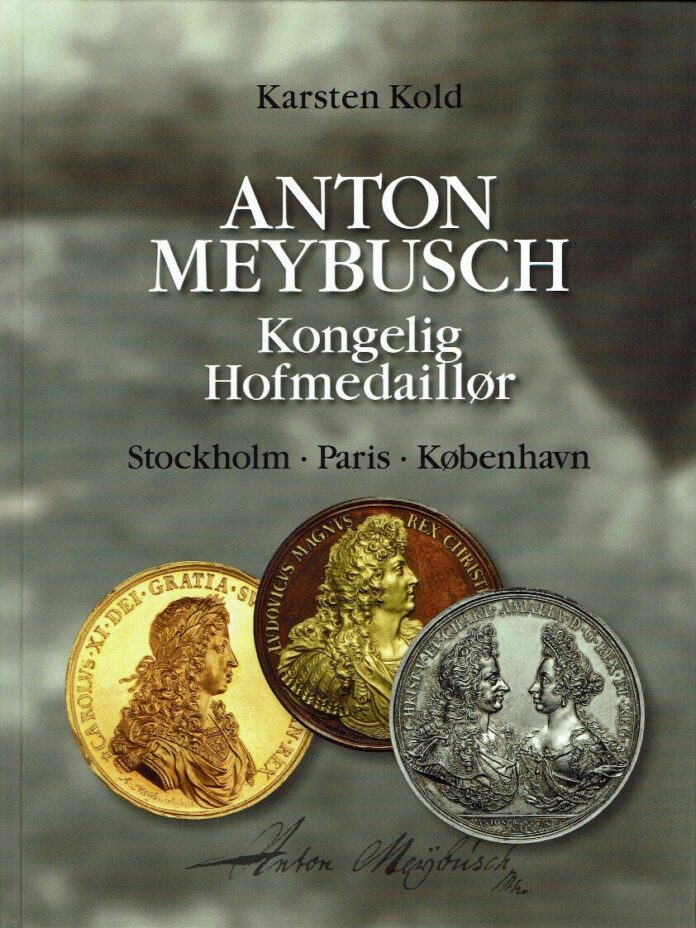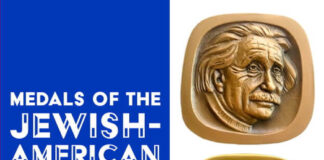
I admit it. My Danish is not only rusty, it is virtually inexistent. That’s why I was a little startled when Dansk Numismatisk Forening asked me to review their latest publication about the royal court medallist Anton Meybusch. However, as soon as I opened the book, my doubts disappeared. You don’t have to know Danish to find this book extremely useful.
Anton Meybusch
Anton Meybusch is an important medallist about whose life and career we did not know much so far. According to the omniscient Wikipedia, he lived from 1645 to 1702. Between 1667 and 1674 he worked for the Danish kings, and moved to the Royal Mint of Stockholm in 1675. He only stayed there for a year because he produced medals on the occasion of the royal coronation without authorization. In 1681 he came to Paris to work for Louis XIV. Meybusch received high payments from the Sun King, partly because he built a coining press for him. In 1690 he returned to Copenhagen, where he held an office at the Danish court starting from 1692 which provided him with 1,000 kronor a year.
As I said, that’s what we knew so far. Many questions remained. Karsten Kold was now able to answer them. The author of the extensive monograph on Anton Meybusch found numerous sources that tell us more about the life and the work of this artist.
Karsten Kold reconstructed Meybusch’s biography on 20 pages. We learn that the artist was probably born in Essen, Germany, that he stayed in Germany for a while after he returned from France and got numerous commissions there. We also learn that Meybusch was an enthusiastic collector whose collection of paintings and coins was auctioned off after his death.
In the appendix, we find a wealth of transcribed documents about Meybusch’s life. Most of them are written in early New High German, which is why they are quite easy to understand if you know German.
A Comprehensive Catalogue of Anton Meybusch’s Work
The main part of the book consists of a catalogue, and you don’t need to know Danish or German to use it. The magnificent baroque medals of Anton Meybusch as well as his coining dies are depicted in their original size and colour. An entire page is dedicated to each of them including a number, the occasion, diameter, weight, description, quotation, references and notes.
If you need a reference work for a catalogue, you will find this book very useful. The author didn’t include an index, but as there are “only” 184 numbers, you don’t really miss it. Browsing through the book is a great pleasure. The medals are beautiful and whoever was responsible for the layout did a fantastic job.
Thus, it’s worth it to order this book from Dansk Numismatisk Forening. It is definitely worth its price of 50 euros.
However, my dear Danish friends, I would like to make a little request. I know that Danish people are incredibly gifted in languages. Knowing English, German, Swedish and so many other languages is so normal for you that you can hardly imagine that the rest of us might struggle with reading Danish texts. It would have been wonderful to have a little summary of the new findings in English. I would also appreciate it a lot if there was an English translation of the table summarizing Anton Meybusch’s biography on page 28. It just makes me sad to think about all the exciting new insights I miss out on due to my poor Danish.
Although, now that I think about it, maybe this would be a great opportunity to finally learn Danish!
The book can be ordered via email at Dansk Numismatisk Forening.
The November issue of Meddelelser fra Dansk Numismatisk Forening reviews the book in detail.
By the way, Dansk Numismatisk Forening also holds auctions in Denmark.



